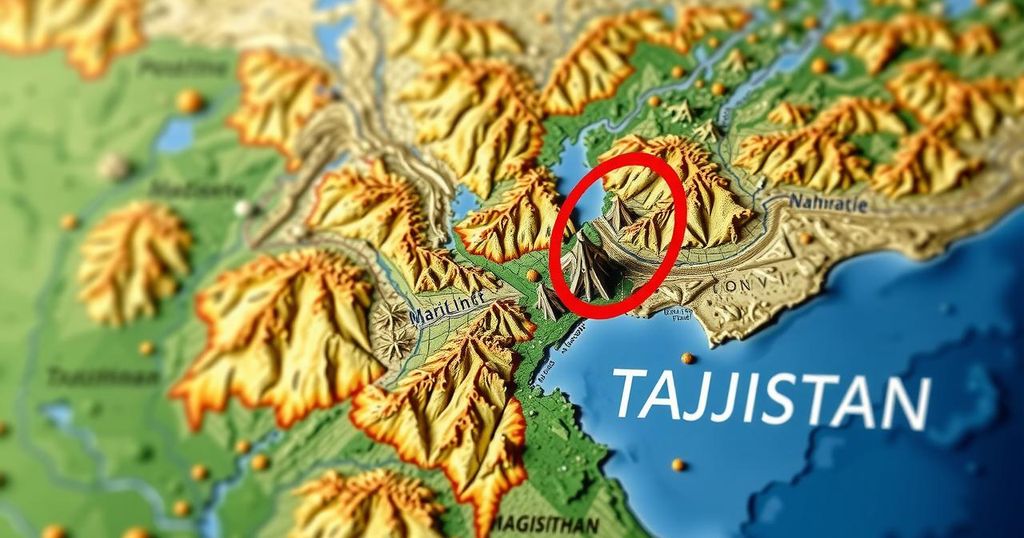Magnitude 4.6 Earthquake Strikes Tajikistan Amid Ongoing Seismic Activity
An earthquake of magnitude 4.6 struck Tajikistan at a depth of 80 kilometers, marking the eighth seismic event in the country within 30 days. Nearly 73.7% of the population resides in seismic zones susceptible to higher magnitude quakes. The World Bank report emphasizes Tajikistan’s vulnerability to seismic activity, underscoring the need for increased preparedness and resilience strategies.
A recent earthquake measuring 4.6 in magnitude struck Tajikistan, occurring at a significant depth of 80 kilometers. The coordinates were recorded at latitude 37.21 N and longitude 71.49 E, as documented by the National Centre of Seismology (NCS). This seismic event took place in the mountainous Pamir region, close to the Garam Chashma hot springs and near the border with Afghanistan. Remarkably, this is the eighth earthquake experienced in Tajikistan within a span of 30 days.
According to a report by the World Bank, Tajikistan lies entirely within a seismically active region. The analysis revealed that 50% of the nation falls within zones capable of experiencing earthquakes of up to 9 magnitudes. Additionally, 38% of the territory is within 8-magnitude zones, while the remaining 12% is in zones that can reach magnitude 7. This seismic vulnerability affects a significant majority of the population; approximately 73.7% of the 8 million residents live in the higher risk zones of 8 to 9 magnitudes.
Tajikistan has a history of impactful earthquakes that have resulted in considerable human suffering and economic loss. The World Bank emphasized the necessity for increased awareness and preparedness in response to these seismic threats. Notably, the continued occurrences underline the reality that the population resides in one of the most active seismic areas globally, which necessitates attention from both local authorities and international agencies as they work towards mitigating future risks.
Tajikistan is geographically situated in a region known for seismic activity, particularly due to its mountainous terrain, which is part of the larger tectonic framework of Central Asia. The country has experienced numerous earthquakes, prompting concerns regarding infrastructure resilience and disaster preparedness. Understanding the seismic zones and population distribution is crucial for formulating effective disaster risk reduction strategies. This context is underscored by the findings reported by the World Bank concerning the risk levels associated with residing in high-magnitude zones.
In summary, the recent earthquake in Tajikistan illustrates the ongoing seismic activity that poses a threat to the region. The country’s significant portion of population living in high-risk zones necessitates strong disaster preparedness frameworks. Continued monitoring and strategic planning are essential to mitigate the risks posed by future seismic events. The findings of the World Bank highlight the urgent need for improved infrastructure and pilot initiatives for earthquake readiness in Tajikistan.
Original Source: m.economictimes.com




Post Comment